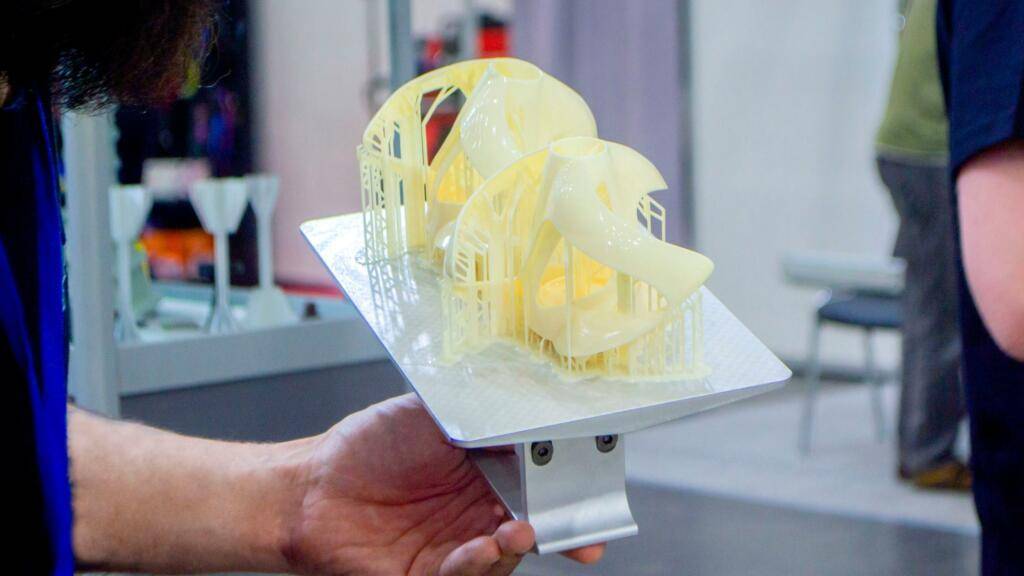Resin 3D printing is now being used for industrial prototyping, and even hobbyist by making it easier than ever to create detailed and precise models. Two popular types of 3D printing technologies are SLA (Stereolithography) and MSLA (Masked Stereolithography Apparatus). Although both utilize photopolymerization, they have distinct differences in how they achieve their results.
In this article by AM Chronicle, let’s dive into the specifics to understand these differences and advantages better
Table of Contents
Understanding Selective Laser Sintering (SLA) 3D Printing
Selective Laser Sintering (SLA) 3D printing utilizes a high-powered laser to fuse powdered material, typically a thermoplastic polymer, into a solid object. A thin layer of powder is spread evenly across a build platform within a chamber. The laser then scans the powder bed according to the digital 3D model, melting and fusing the powder particles together to form a solid cross-section of the object. This process is repeated layer by layer until the entire 3D model is built.
Once the build is complete, the part is allowed to cool before being removed from the powder bed. Unlike other 3D printing methods, SLS doesn’t require support structures, as the unsintered powder supports the part during the build process. This makes SLS efficient for producing complex geometries and intricate designs.
Understanding Masked Stereolithography Apparatus (MSLA) 3D Printing
Masked Stereolithography Apparatus (MSLA) uses a liquid photopolymer resin as its building material. The process involves projecting light through a digital mask, typically an LCD screen, onto the resin. This light selectively cures the resin into the desired shape, layer by layer. As the build platform lowers, a new layer of resin is exposed, and the process repeats until the 3D object is complete.
MSLA printers are known for their ability to produce highly detailed and precise parts due to the use of a digital mask to control the light exposure. This technology offers faster print speeds compared to some other resin-based methods, making it suitable for various applications in industries like jewelry, dentistry, and prototyping.
Key Differences Between SLA vs MSLA
| Feature | Selective Laser Sintering (SLA) | Masked Stereolithography Apparatus (MSLA) |
| Light Source | Laser | Array of UV LEDs with an LCD mask |
| Speed | Slower due to point-by-point tracing | Faster because the entire layer is cured simultaneously |
| Resolution | High resolution due to the precision of the laser, with adjustable spot sizes | Dependent on the LCD resolution, with uniform precision across the build area |
| Cost | Generally more expensive, both in terms of machine cost and maintenance | Often more affordable, making it accessible to hobbyists and small enterprises |
| Complexity and Maintenance | Requires careful calibration and maintenance due to the mechanical components like galvanometers | Simpler maintenance, primarily involving the LCD and UV LEDs |
Choosing Between SLA and MSLA
The choice between SLA and MSLA largely depends on the specific needs of your project. If you require extremely high precision and can accommodate longer print times and higher costs, SLA might be the better option. On the other hand, if you need faster prints with still excellent detail and are looking for a more budget-friendly solution, MSLA could be the way to go.
| Application Area | SLA | MSLA |
| Prototyping | Appropriate for intricate and precise prototypes | Appropriate for faster production of multiple prototypes |
| Dental and Orthodontics | Most appropriate for single, highly detailed models | Appropriate for batch production of models |
| Jewelry | Appropriate for single, highly detailed models | Appropriate for batch production of models |
| Engineering Parts | Appropriate for detailed and delicate jewelry | Appropriate for producing multiple pieces quickly |
| Medical Models | Appropriate for complex, precise parts | Appropriate for parts requiring quicker production |
| Hobbyist Projects | Appropriate for detailed hobbyist models | Appropriate for faster production of hobbyist parts |
Both technologies have their own strengths and are continuously evolving. Whether you are a professional looking for high-detail manufacturing or a hobbyist eager to explore new creative possibilities, understanding the differences between SLA and MSLA will help you make an informed decision for your 3D printing needs.
In conclusion, while both SLA and MSLA have their unique advantages and applications, the primary difference lies in their light source and exposure methods, influencing their speed, cost, and resolution. Choose the one that best aligns with your specific requirements to get the most out of your 3D printing experience.


